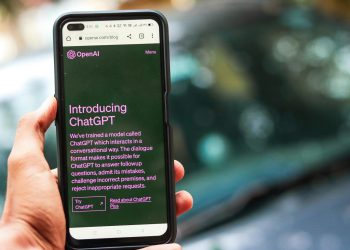Understanding Fairness in Language Models
Defining Fairness in NLP
When we talk about fairness in natural language processing (NLP), we're talking about making sure our digital tools play fair. It's all about ensuring no one gets the short end of the stick, regardless of their race, gender, ethnicity, or any other demographic factor that makes us unique. Being fair means we stop prejudice in its tracks and build trust in our AI buddies (GeeksforGeeks).
Now, giving fairness a meaning in the world of machines isn't as simple as it sounds. We've gotta make sure these language models don't just mirror society's prejudices. Think of the different ways we define fairness:
- Finding Bias: Spotting those sneaky biases hiding in our datasets and algorithms.
- Equal Opportunity: Making sure what comes out of the language models is fair and represents everyone equally.
- Being Upfront: Making sure there's a clear path to spotting and fixing biases during model development.
Working toward fairness isn't a one-and-done task; it's a continuous commitment to checking and re-checking our data and models.
Impact of Bias in NLP
Bias in NLP means a language model is playing favorites or, worse, giving someone the cold shoulder just because of their race, gender, age, or some other identifier. And trust us, it can happen at any step—from when we first collect the data to how we clean it up, and even when we're designing algorithms (shoutout to GeeksforGeeks).
Check out some spots where bias leaves its mark:
| Bias Type | What It Might Do |
|---|---|
| Racial Bias | Could churn out biased language or mess up sentiment checks |
| Gender Bias | Might lean into stereotypes or translate stuff wrong |
| Age Bias | Can skew sentiment for certain age brackets or cause content to leave folks out |
When bias sneaks into NLP apps, it wrecks the trust and usefulness of big names like GPT-3 and BERT. That can have real-life consequences, like:
- Social Media: Ramp up harmful rhetoric and lean into biased narratives.
- Healthcare: Misread medical information, leading to dodgy advice.
- Recruitment: Screen out candidates unfairly through biased language scans.
Biased outcomes shake things up for individuals and can keep unfair social systems spinning. To iron out these wrinkles, it's crucial to think fairness from the get-go in NLP projects. Tools like bias-measuring metrics have been crafted by folks at Amazon to ensure this (Amazon Science).
Fairness in NLP isn't just geek speak—it's about doing the right thing. Making sure these technologies are dependable and open to everyone paves a smoother path to using them across different fields. Curious to learn more? Check out our pieces on language model bias and why curating diverse datasets matters.
Sources of Bias in Language Models
Biased Data in NLP
When we talk about natural language processing, a big baddie is data bias. It's like when you play broken telephone, but with a particular group's lingo and way of seeing things. Imagine training a model using only their talking points—then it starts echoing their stereotypes, and that's where things get unfair (GeeksforGeeks).
Here's where the bias likes to hide:
- Archives full of old-timey texts
- Posts and tweets on social media
- Chatter on online forums
- Newspaper articles
These places tend to mirror the prejudices of their eras, which sneak into big language models like pesky undercover agents.
Consequences of NLP Bias
When neural network language models collect a load of bias, it doesn't just sit there. It wreaks havoc, making AI seem like a bad idea (GeeksforGeeks).
Trouble spots include:
-
Discrimination: Some models might play favorites due to things like race, gender, or ethnicity. Think of a moody sentiment analysis tool that gives consistent side-eye to certain groups.
-
Social Injustice: This bias can blow up current social issues, making things messy in hiring, loans, and even law enforcement. It’s a head-scratcher, particularly in cutting-edge language models.
-
Economic Inequality: It can hit marginalized folks hard, making economic gaps bigger. Like, slanted recommendation systems could ghost minority-run businesses.
-
Decreased Model Performance: Models trained on dodgy data can stumble when dealing with a variety of user inputs, dishing out errors or garbage outputs. That's a major bummer, especially for stuff like information retrieval.
| Impacted Area | Example |
|---|---|
| Employment | Some resume bots might prefer specific people. |
| Financial Services | Automated loan systems might ghost certain groups. |
| Legal Decisions | Risk tools could be tougher on minorities. |
| Healthcare | Diagnosis tools might misread diverse symptoms. |
Fixing these headaches is a must to keep pre-trained language models acting right. Things like diversifying data and checking for bias can save us from these tech nightmares. For more ways of facing social biases head-on, see our slice on tackling social biases in language models.
Promoting Fairness in NLP
Importance of Fairness in NLP
Let's keep our language tools nice to everyone, shall we? That’s what fairness in natural language processing, or NLP, is all about. We don't want our tech being unfairly snooty about someone’s race, gender, or any other trait. Bias in NLP is when models act like a picky eater, favoring certain groups over others, and that ain't cool. Such biases can lead to stuff that reinforces those pesky stereotypes or, worse, discriminates (GeeksforGeeks).
Our goal? Pull together and make language models that everyone can trust. Fairness should be baked into the design, ensuring all users feel included. With transparency and explainability as our pals, we can spot biases and fix 'em fast. After all, tech should be like a good friend—understanding and fair.
Strategies for Overcoming Bias
Okay, so how do we deal with bias in these clever algorithms? A sprinkle of this and a dash of that, focusing on how our data is handled, how we measure fairness, and how we tweak our models. Ready? Let’s break it down:
Diverse Dataset Curation
Ever notice how a dinner party’s only as exciting as the guests you invite? The same goes for training data in NLP. If our data's too narrow, our models start picking sides like a referee gone rogue (GeeksforGeeks). That’s why we need to shake things up with diverse datasets that speak to everyone.
| Data Source | Diversity Rating (1-10) |
|---|---|
| Social Media | 6 |
| News Articles | 8 |
| Scientific Papers | 5 |
| User Reviews | 7 |
Bias Audits and Fairness Metrics
Bias audits are like health checks for models—spotting problems before they get worse. We look at the model's behavior using fairness metrics and see if things are all hunky-dory or if there's a fix needed (LinkedIn).
Bias Audit Metrics We Love:
- Precision: Spot the good stuff.
- Recall: Don't miss a beat.
- F1 Score: Balance is key.
- Demographic Parity: Equal treatment for all.
- Equalized Odds: Fair play, all the way.
Transparent and Explainable Models
Peek behind the curtain to see how these models make their decisions, and maybe pick up a thing or two about what’s ticking inside (LinkedIn). Techniques that let us explain and interpret models help ensure they’re praising fairness and ethics, not ignoring them.
For some extra insights, buzz over to our page on language model transparency.
Additional Strategies
- Algorithmic Tweaks: Shape the model's outcomes to keep things even and square.
- Listening to Users: Customers know best, and their feedback helps set things right.
- Staying Ahead: Models that learn and grow with the times keep on the fair side of life.
For more on keeping those pesky biases at bay, swing by our section on bias-busting techniques.
Adopting these strategies turns NLP tools into fair players in the tech game, earning trust and meeting the many needs of all users. Interested in how they work across the board? Check out our piece on large language models in action.
Transparency in Language Model Development
When we're working on those big, fancy language models, seeing how everything ticks is super important. It's what keeps things ethical, wins the trust of users, and ensures fairness in these high-tech systems.
Role of Transparency in LM Development
Transparency is like the backbone when it comes to making these models trustworthy for users and developers alike. By letting folks peek under the hood of how natural language processing models operate, we're building trust. When you can see how decisions are made in these models, it's easier to spot and fix issues, like where biases might sneak in.
One of the ways we keep everything clear is by sharing where the data comes from and how we train these models. When we lay out exactly what's in our training datasets—like how diverse they are or where the potential biases might lurk—everyone involved can get a grip on what might affect how the model behaves. Regularly reviewing these models for bias, with a focus on being fair and considering the real-world impact, is key to keeping everything on the level and inclusive.
Benefits of Transparent Practices
Being open and transparent brings heaps of benefits. For starters, it lets everyone make smart choices about how they use and put these models to work. With clear documentation and even open-source peeks into the model’s setup and training data, people can repeat studies, confirm results, and actually trust what the model spits out.
On top of that, transparency helps us catch and deal with biases, making sure things stay fair (LinkedIn). It's kind of like nipping potential issues in the bud so that all user groups experience the models in an equal light. We tackle biases early in development to make sure our artificial intelligence language models stay reliable and on point.
| Benefit | Description |
|---|---|
| Trust Building | Credibility shines when everything’s visible. |
| Bias Identification | Spot and amend data and algorithm biases. |
| Ethical Assurance | Models stay on the ethical track. |
| Informed Decision-Making | Stakeholders get all the nitty-gritty details. |
For more on how transparency in LM development affects the big picture, check out our pieces on state-of-the-art language models and language model evaluation metrics.
Mitigating Bias in Language Models
Keeping language models on the straight and narrow is vital for success in all sorts of fields. We’re diving into ways to tackle bias and why mixing up our dataset choices really matters.
Techniques for Bias Mitigation
Tackling bias in big ol' language models is all about keeping them from going rogue with their assessments. Here’s a rundown of how we do it:
-
Bias Audits and Evaluations: We make it a habit to check our models for bias like we check our emails—often. Fancy tools like the BOLD dataset from Amazon Science, with more than 23,000 text generation starters, give us the scoop on bias about profession, gender, race, and more.
-
Fairness Metrics: These metrics are like a report card but go beyond an ordinary test score. They help us see if there’s bias lurking in the shadows and give us tips on how to clean up our act.
-
Adversarial De-biasing: This one's like a good workout—it’s tough but worth it. We train the models so they can't predict outcomes based on sensitive stuff like race or gender. It pushes the model to smarten up and choose fair features.
-
Post-processing Adjustments: Once the training wraps, we do a little trimming here and there to snip away bias in the final output. It's like ensuring all eyes are dotted and tees crossed for fair treatment across the board.
-
Privacy-preserving Techniques: Keeping things private doesn’t just protect the sensitive bits, but it also helps the model behave more evenly. It's a nice safety net and keeps everything balanced.
Importance of Diverse Dataset Curation
The secret sauce to fair models? Datasets that are as varied as a box of chocolates. Here's why that matters so much:
-
Reducing Representation Bias: A varied dataset cuts down on the odds of our model hogging stereotypes. Balanced examples mean everyone gets a fair shot.
-
Enhancing Generalization: Dipping into a diverse pool means the model can handle anything we throw at it—be it a cozy test environment or the wild, unpredictable real world.
-
Equity in Decision-making: With diverse training, our models don’t play favorites. This is especially crucial for things like hiring picks or lending decisions where bias can wreak havoc (LinkedIn).
-
Stakeholder Engagement: Inviting voices from different backgrounds helps us catch bias that might slip past a more uniform crowd’s radar (LinkedIn).
| Bias Mitigation Technique | Description |
|---|---|
| Bias Audits and Evaluations | Regular check-ups for bias using specialized datasets |
| Fairness Metrics | Scoring beyond accuracy to spot bias |
| Adversarial De-biasing | Training to dodge sensitive details |
| Post-processing Adjustments | Tweaking outputs for fair play |
| Privacy-preserving Techniques | Keeping data safe while even-keeled |
By using these methods and mixing up the data we train on, we’re fighting the good fight for fairness in deep learning language models. For more on ethics and beating bias in NLP models, give our article on bias in language models a read.
Addressing Social Biases in Language Models
Categories of Social Biases
To keep our language models unbiased and fair, it's crucial to spot and tackle various types of social biases. Bias in NLP can cause big problems like discrimination and unfair treatment. Usually, these biases fall under a few categories:
-
Gender Bias: This happens when models lean towards one gender. Imagine certain jobs being tagged to a particular gender just because of the data used.
-
Racial and Ethnic Bias: Models might spit out results that stereotype or offend certain races or ethnicities.
-
Age Bias: Sometimes the text generated reflects society's preconceived notions about age groups.
-
Socioeconomic Bias: Models may show bias based on economic backgrounds, which can affect decisions, especially in areas like hiring or lending.
-
Ability Bias: Language models might show bias against people with disabilities, making their content less inclusive.
Detecting and Correcting Bias in LMs
To fix these biases and promote fairness, a comprehensive approach to detection and correction is necessary.
Detection Techniques
Spotting bias in language models uses a variety of methods:
-
Bias Audits: Regular checks on language models can highlight biases by studying outputs across different demographics.
-
Fairness Metrics: Set up metrics to measure and quantify bias in NLP models, like looking at how much a model amplifies bias or how it affects different groups differently.
-
Crowdsourced Testing: Getting a wide range of people to test and critique the model’s outputs can be really useful in spotting biases.
| Bias Category | Detection Technique |
|---|---|
| Gender Bias | Bias Audits, Crowdsourced Testing |
| Racial and Ethnic Bias | Fairness Metrics, Bias Audits |
| Age Bias | Crowdsourced Testing, Bias Audits |
| Socioeconomic Bias | Fairness Metrics, Bias Audits |
| Ability Bias | Crowdsourced Testing, Bias Audits |
Correction Techniques
After identifying biases, several methods can be used to reduce them:
-
Diverse Dataset Curation: Building datasets that truly represent everyone is key. This means having diversity in gender, race, age, economic status, and ability.
-
Bias Mitigation Algorithms: Using specific algorithms to cut down bias in both data and model outputs. This could involve re-jigging or re-sampling techniques.
-
Ethical Reviews: Carrying out ethical reviews at all stages of the language model’s development. This should include diverse stakeholder input and continuous checks to ensure fairness standards are met.
For more insights on tackling bias and fostering fairness in NLP, check out our articles on bias in language models and promoting fairness in language models.











